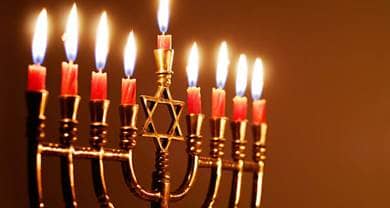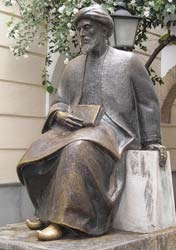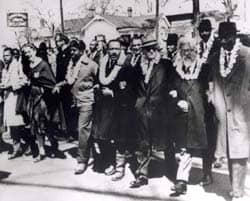- Trending:
- Pope Leo Xiv
- |
- Israel
- |
- Trump
- |
- Social Justice
- |
- Peace
- |
- Love

RELIGION LIBRARY
Judaism
Ultimate Reality and Divine Beings
Throughout the history of Jewish thought and its antecedent Israelite religion, there has been a theological tension between transcendent and immanent images of God as the source of ultimate reality, with ongoing attempts to determine how to bridge the gap between God and humanity. The basis for this tension can be found in Israelite cosmogony.
On the one hand the Genesis account of creation posits an omnipotent, transcendent God who systematically and harmoniously created the world in six days, while on the other hand, alternative biblical texts depict a more immanent God who does not exist apart from the forces of nature and does not appear to have control over them. This is a God whose sovereignty is consistently threatened by autonomous, quasi-divine forces of evil in nature that are never fully overcome, reflecting the influence of Mesopotamian pagan and polytheistic cultures upon Israelite religion.
| Genesis 1:2 |
| Now the earth was shapeless and empty, darkness was over the surface of the deep (tehom), and the Spirit of God was hovering over the waters. |
| Opening lines of Enuma Elish |
| When the sky above was not named, And the earth beneath did not yet bear a name, And the primeval Apsû, who begat them, And chaos, Tiamat, the mother of them both, Their waters were mingled together, And no field was formed, no marsh was to be seen; When of the gods none had been called into being. |
When comparing Genesis 1:2 and the Mesopotamian creation myth Enuma Elish, one can see that at the beginning of both narratives, there are natural forces of water that are already in existence prior to creation. Just as Apsu and Tiamat are primordial forces of fresh and saline water in the Enuma Elish, the tehom or the "deep" in Genesis is most likely primordial, because it is there before God begins the process of creation. God never creates it. Ever since the medieval period there has been a growing consensus among biblical scholars that God did not create the world ex nihilo or out "of nothing," because the tehom was already in existence and the "wind of God swept over the water." According to the narrative, God actually created the celestial water on the second day and earth on the third day.
Unlike the Enuma Elish, the Genesis creation story does not contain a myth about how God came into existence in relation to other gods, yet there is an allusion to other divine beings in Genesis 1:26 who seem to be primordial, indicating a "divine assembly" offering advice to God, but God appears to have the final say on matters of creation. In 1 Kings 22:19-23, Job 1:6-12 and 2:1-6, there appear to be a small pantheon of "junior" divinities similar to the other gods at the end of the Enuma Elish who are important but subordinate. Yet in Psalm 74:12-17 there is a reference to a cosmic battle in which the God of Israel victoriously fought the Yam, "sea," while smashing the heads of Tanninin, "sea monsters," and Livyatan (Leviathan), the twisting seven-headed dragon. Immediately following the cosmic battle, the psalmist refers to God fashioning day and night, sun, moon, boundaries of the earth, summer and winter. This creation myth is a direct parallel to a Canaanite creation myth discovered in Ugarit (an ancient Syrian city) from the 14th century B.C.E. in which the god Baal defeated the ocean Prince Yam, the Judge River, Lotan (Leviathan), and Tannin.
| Genesis 1:26 |
| Then God said, "Let us make man in our image, in our likeness, and let them rule over the fish of the sea and the birds of the air, over the livestock, over all the earth, and over all the creatures that move along the ground." |
| Psalms 74:12-17 |
| 12. But you, O God, are my king from of old; you bring salvation upon the earth. 13. It was you who split open the sea by your power; you broke the heads of the monster in the waters. 14. It was you who crushed the heads of Leviathan and gave him as food to the creatures of the desert. 15. It was you who opened up springs and streams; you dried up the ever flowing rivers. 16. The day is yours, and yours also the night; you established the sun and moon. 17. It was you who set all the boundaries of the earth; you made both summer and winter. |
In these myths, either the superior god Baal or the Lord God creates the world by overtaking other cosmic forces associated with nature and unifying them. This represents the transition from primordial chaos to cosmos. Ultimately, as the biblical scholar Jon Levenson has convincingly shown, this comparison of biblical and Mesopotamian texts indicate that God has to gain control over the universe through combat with other cosmic forces of nature and is therefore not completely transcendent and omnipotent. It appears that the Priestly editor of Genesis 1 sought to suppress these vestiges of paganism and polytheism in the primary Israelite creation story in order to present a myth of primal order and harmony created by God in contrast to the disorder and disharmony of humanity.
Later, in response to the destruction of the Second Temple in 70 C.E., the rabbis continued to see God as the transcendent God who punished them for their sins by destroying the Second Temple, while on the other hand, the rabbis began to portray God as the immanent divine presence or Shekhinah who suffers with Israel in exile.
 In response to the medieval theological shift initiated by Maimonides to complete divine transcendence, medieval kabbalists tried to preserve both the unknowable image of God posited by the philosophers and the more immanent image of God as Shekhinah by constructing a theological bridge or ladder between them based on the doctrine of the ten sefirot or emanations of divinity. In this mystical framework, the kabbalists first posited the Ein Sof or "infinite" image of God that is radically transcendent and cannot be comprehended. Influenced by Neo-Platonic ideas of emanation, they then envisioned that the ten sefirot flow from Ein Sof, gradually revealing different divine attributes and effectively bridging the gap between God and humanity. By positing the sefirotic framework, the kabbalists appeared to stand on the blurred boundary between monotheism and polytheism as they attempted to portray the organic workings of the divine life.
In response to the medieval theological shift initiated by Maimonides to complete divine transcendence, medieval kabbalists tried to preserve both the unknowable image of God posited by the philosophers and the more immanent image of God as Shekhinah by constructing a theological bridge or ladder between them based on the doctrine of the ten sefirot or emanations of divinity. In this mystical framework, the kabbalists first posited the Ein Sof or "infinite" image of God that is radically transcendent and cannot be comprehended. Influenced by Neo-Platonic ideas of emanation, they then envisioned that the ten sefirot flow from Ein Sof, gradually revealing different divine attributes and effectively bridging the gap between God and humanity. By positing the sefirotic framework, the kabbalists appeared to stand on the blurred boundary between monotheism and polytheism as they attempted to portray the organic workings of the divine life.
 Influenced by religious existentialism, the 20th-century American Jewish theologian Abraham Joshua Heschel responded to the essentialist philosophy of the modern period by arguing that people had become so used to perceiving God as the object of their reflection, they were unable to realize God's transcendent nature as the ineffable subject and source of ultimate reality who is in search of humanity. Following the Holocaust, Heschel argued that human beings had to recover the sense of wonder at divine transcendence in order to hear the "still small voice" (1 Kings 19:12) of God drowned out by human domination.
Influenced by religious existentialism, the 20th-century American Jewish theologian Abraham Joshua Heschel responded to the essentialist philosophy of the modern period by arguing that people had become so used to perceiving God as the object of their reflection, they were unable to realize God's transcendent nature as the ineffable subject and source of ultimate reality who is in search of humanity. Following the Holocaust, Heschel argued that human beings had to recover the sense of wonder at divine transcendence in order to hear the "still small voice" (1 Kings 19:12) of God drowned out by human domination.
Yet a new group of post-Holocaust theologians emerged in the late 1960s that were unable to countenance a transcendent and omnipotent God who would allow the death of six million of God's people to perish in Nazi death camps. While some rejected the biblical God entirely, even the most radical theologians were unable to completely abandon all theological speculation after the Holocaust. Instead, they shifted the theological pendulum back to divine immanence, arguing that after the Holocaust, the biblical God had become hidden, fractured, or even powerless, providing comfort rather than protection for the Jews of the post-Holocaust period who were now called upon to take control of their destiny and reclaim their Judaism on their own terms.
Study Questions:
1. How are different images of God held in tension? What text supports each view?
2. How did Judaism's understanding of God change with the destruction of the temple? Why?
3. Why did the image of God change as modernity developed?
4. What was the effect of the Holocaust on Jewish theology?










